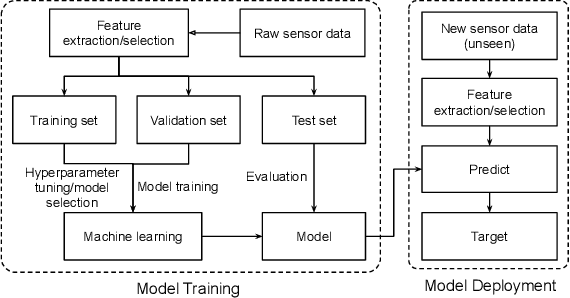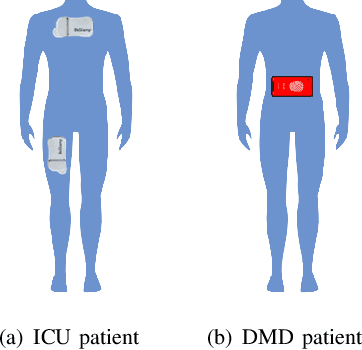Esha Datta
An Overview of Human Activity Recognition Using Wearable Sensors: Healthcare and Artificial Intelligence
Mar 29, 2021



Abstract:With the rapid development of the internet of things (IoT) and artificial intelligence (AI) technologies, human activity recognition (HAR) has been applied in a variety of domains such as security and surveillance, human-robot interaction, and entertainment. Even though a number of surveys and review papers have been published, there is a lack of HAR overview paper focusing on healthcare applications that use wearable sensors. Therefore, we fill in the gap by presenting this overview paper. In particular, we present our emerging HAR projects for healthcare: identification of human activities for intensive care unit (ICU) patients and Duchenne muscular dystrophy (DMD) patients. Our HAR systems include hardware design to collect sensor data from ICU patients and DMD patients and accurate AI models to recognize patients' activities. This overview paper covers considerations and settings for building a HAR healthcare system, including sensor factors, AI model comparison, and system challenges.
Bandit Policies for Reliable Cellular Network Handovers in Extreme Mobility
Oct 28, 2020



Abstract:The demand for seamless Internet access under extreme user mobility, such as on high-speed trains and vehicles, has become a norm rather than an exception. However, the 4G/5G mobile network is not always reliable to meet this demand, with non-negligible failures during the handover between base stations. A fundamental challenge of reliability is to balance the exploration of more measurements for satisfactory handover, and exploitation for timely handover (before the fast-moving user leaves the serving base station's radio coverage). This paper formulates this trade-off in extreme mobility as a composition of two distinct multi-armed bandit problems. We propose Bandit and Threshold Tuning (BATT) to minimize the regret of handover failures in extreme mobility. BATT uses $\epsilon$-binary-search to optimize the threshold of the serving cell's signal strength to initiate the handover procedure with $\mathcal{O}(\log J \log T)$ regret.It further devises opportunistic Thompson sampling, which optimizes the sequence of the target cells to measure for reliable handover with $\mathcal{O}(\log T)$ regret.Our experiment over a real LTE dataset from Chinese high-speed rails validates significant regret reduction and a 29.1% handover failure reduction.
 Add to Chrome
Add to Chrome Add to Firefox
Add to Firefox Add to Edge
Add to Edge